Washington Artillery Arsenals
Home Sweet Home
The Bricks and Mortar of the Washington
Artillery
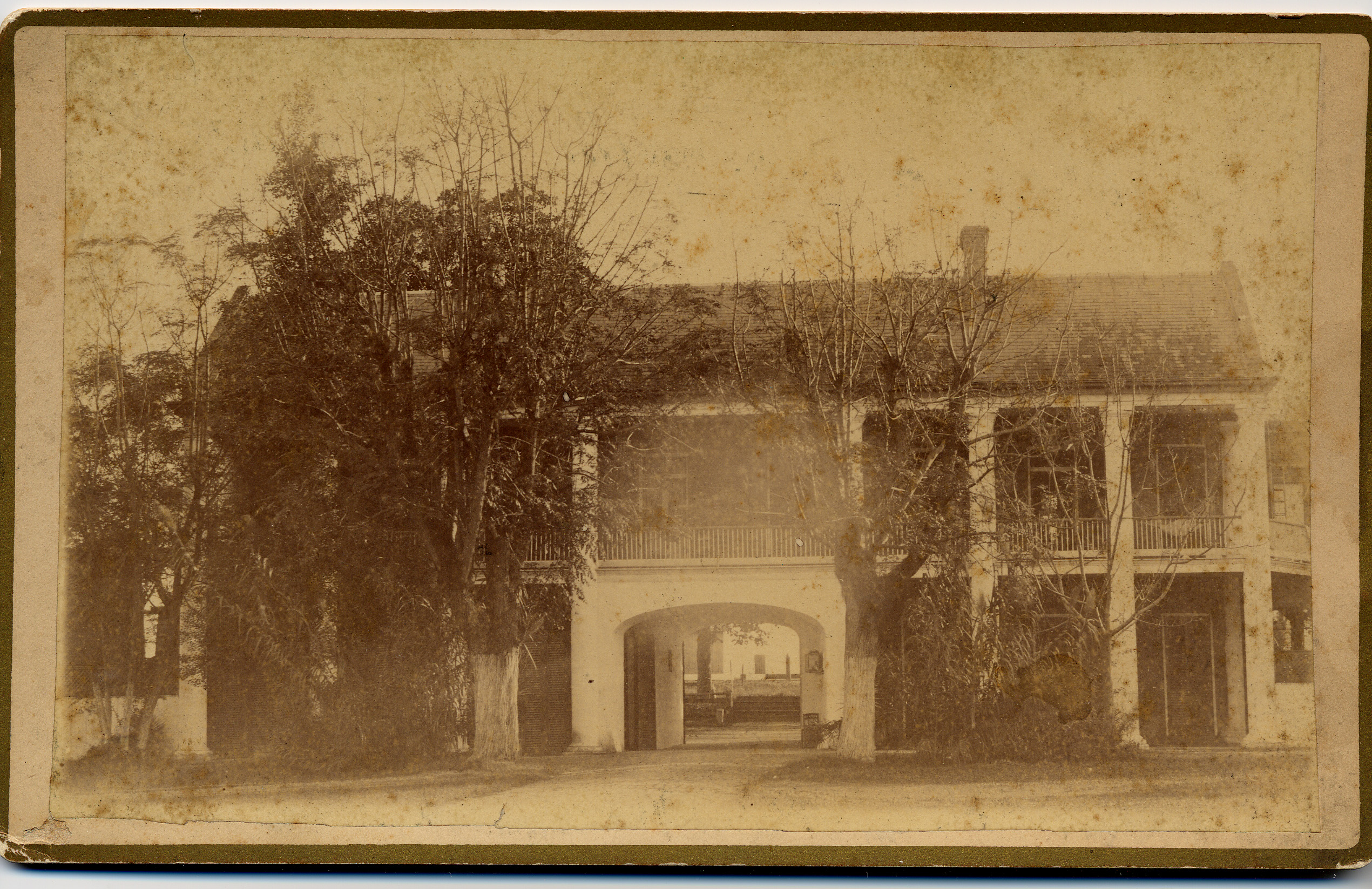
Historic Jackson
Barracks in the outskirts of New Orleans has always been the training ground for
the Washington Artillery. Built in the 1830s and named after the famed commander
of the Battle of New Orleans, Andrew Jackson, the grounds served both federal
and state troops. However over the centuries, the battalion also
maintained an arsenal within the city proper.
The Cabildo
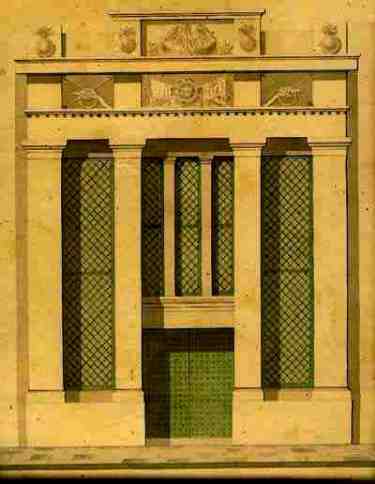
Architect Joseph A. Darkin's drawing of the
arsenal at the Cabildo.
(courtesy Louisiana State Museum)
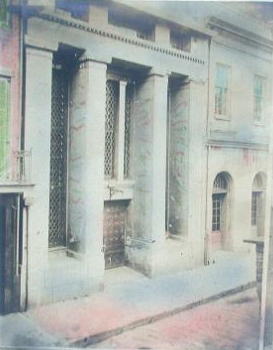
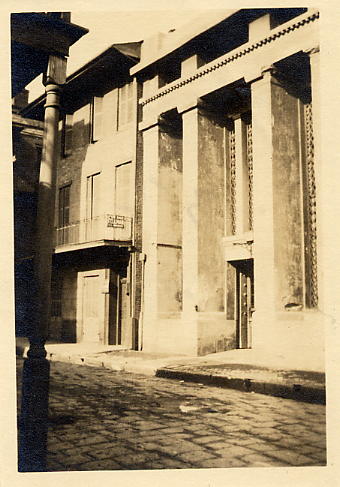
First Arsenal of the Washington Artillery
near the Cabildo
while serving under the Louisiana Legion
(photos circa 1930s)
In February,
1821, the governor of Louisiana was authorized by the legislature to buy four
4-pounder cannon with carriages, for the use by New Orleans militia uniformed
organizations. Each of these units were required by law to drill at least once
per month. It was this same year that a new militia unit called the Louisiana
Legion was organized. “Legion”* simply meant a military unit composed of four
companies, each organized with infantry, cavalry, and artillery. The two artillery companies of the older Battalion
of New Orleans Volunteers, one of which was known as the Washington Artillery,
merged to become the fourth company of this new legion. This newly consolidated
artillery company, the Washington Artillery, was housed in the rear of the Cabildo. The lattice ironwork of the balcony still displays the initials “L. L.”
(Louisiana Legion) along with the flaming bomb, a symbol of artillery. This was
the earliest known armory of the Washington Artillery. In keeping with its
status amongst the community, the Washington Artillery was given the honor of
firing a cannon salute and forming the honor guard when the Marquis de
Lafayette, fighting companion of George Washington in the American Revolution,
visited New Orleans in 1825.
(*Actually, the term “legion” dates
back to Roman times when it designated a military unit of 1000 men, composed of
landowners only, and was derived from the Latin word meaning “conscription”. As
with its American counterpart, it was composed of “citizen soldiers” concerned
with protecting their homeland and property.)
Girod Street
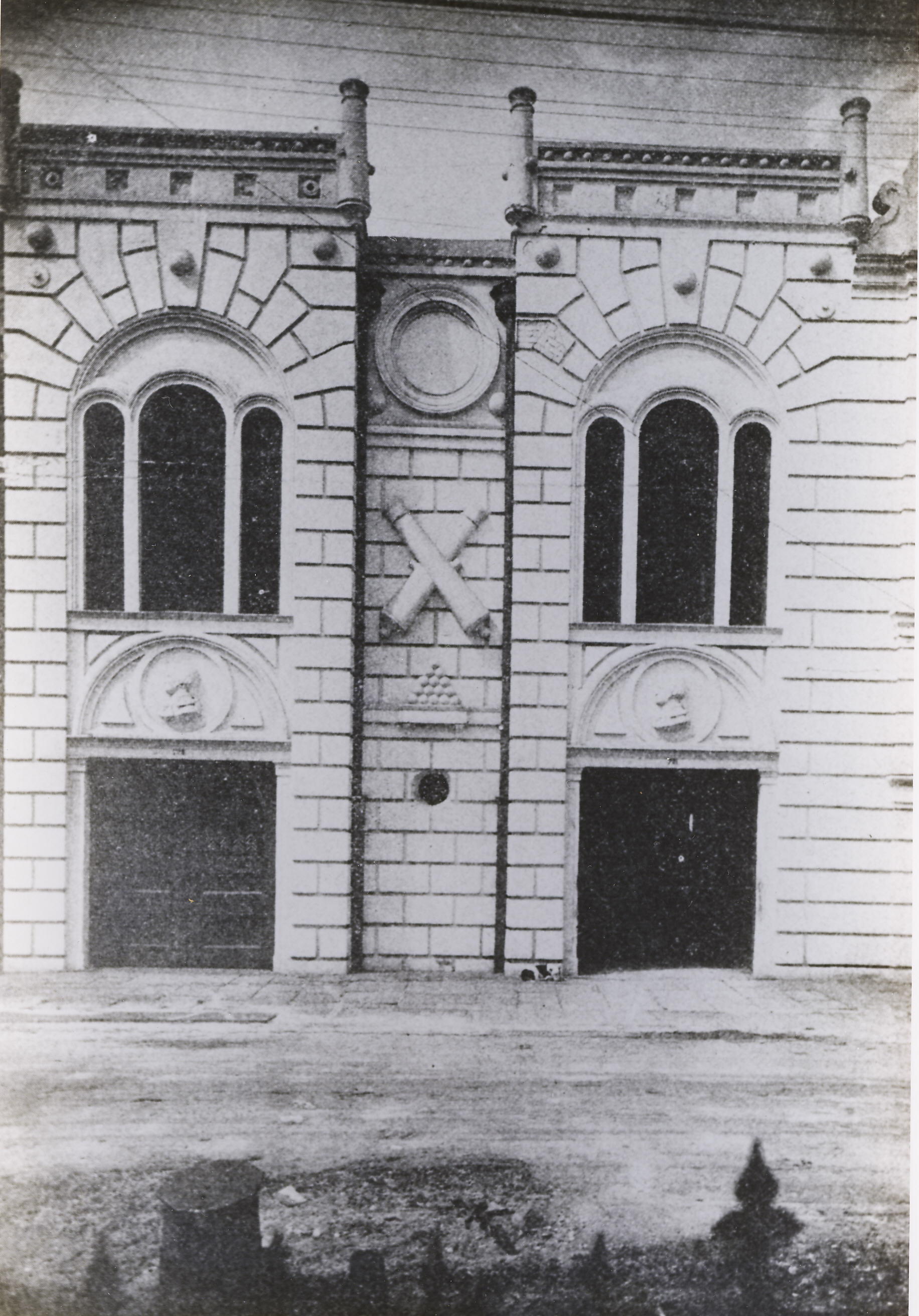
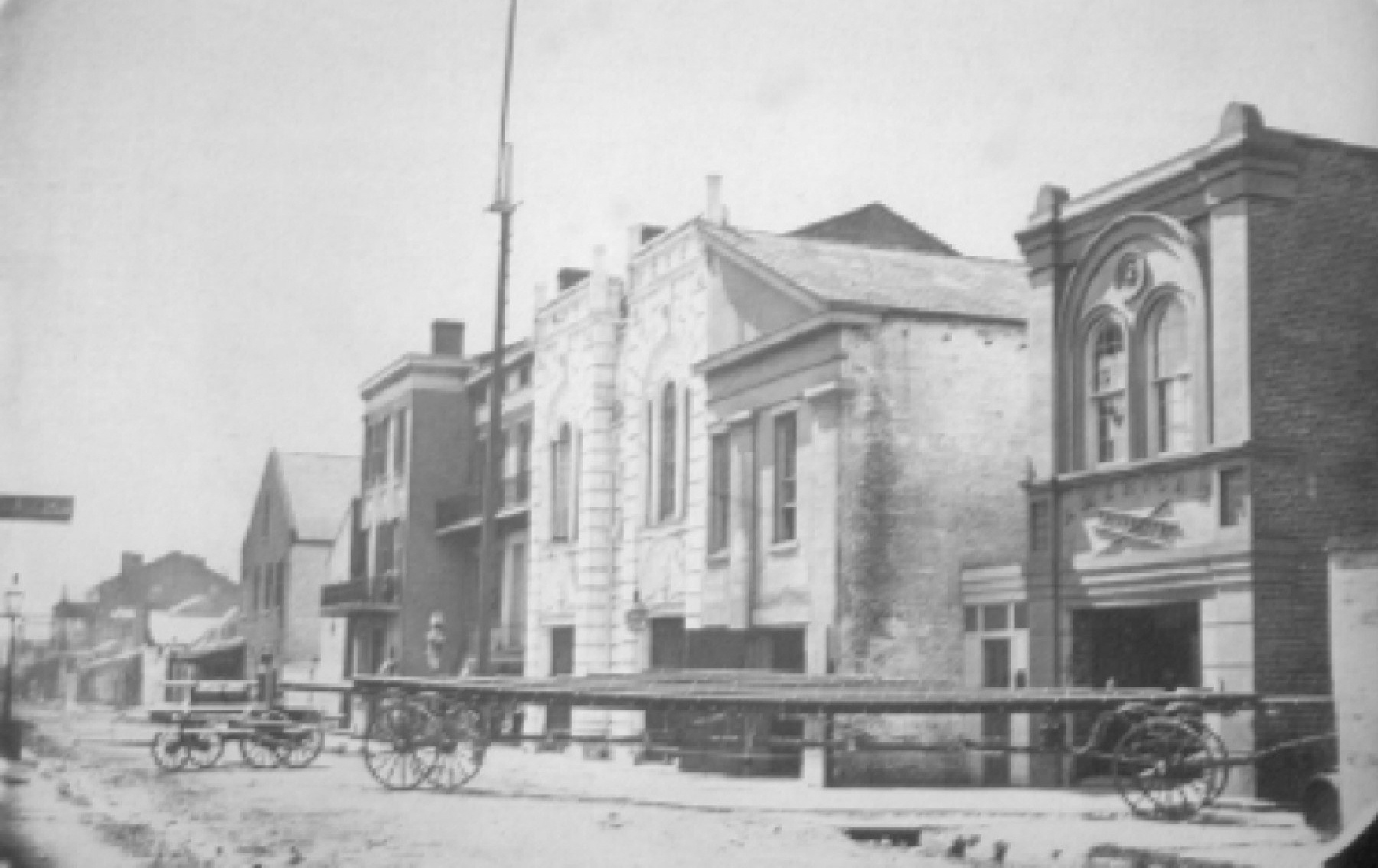
Girod Street Arsenal
(center of photo to the left of fire
station.)
Built in 1858. Burned, confiscated, and sold
in 1867.
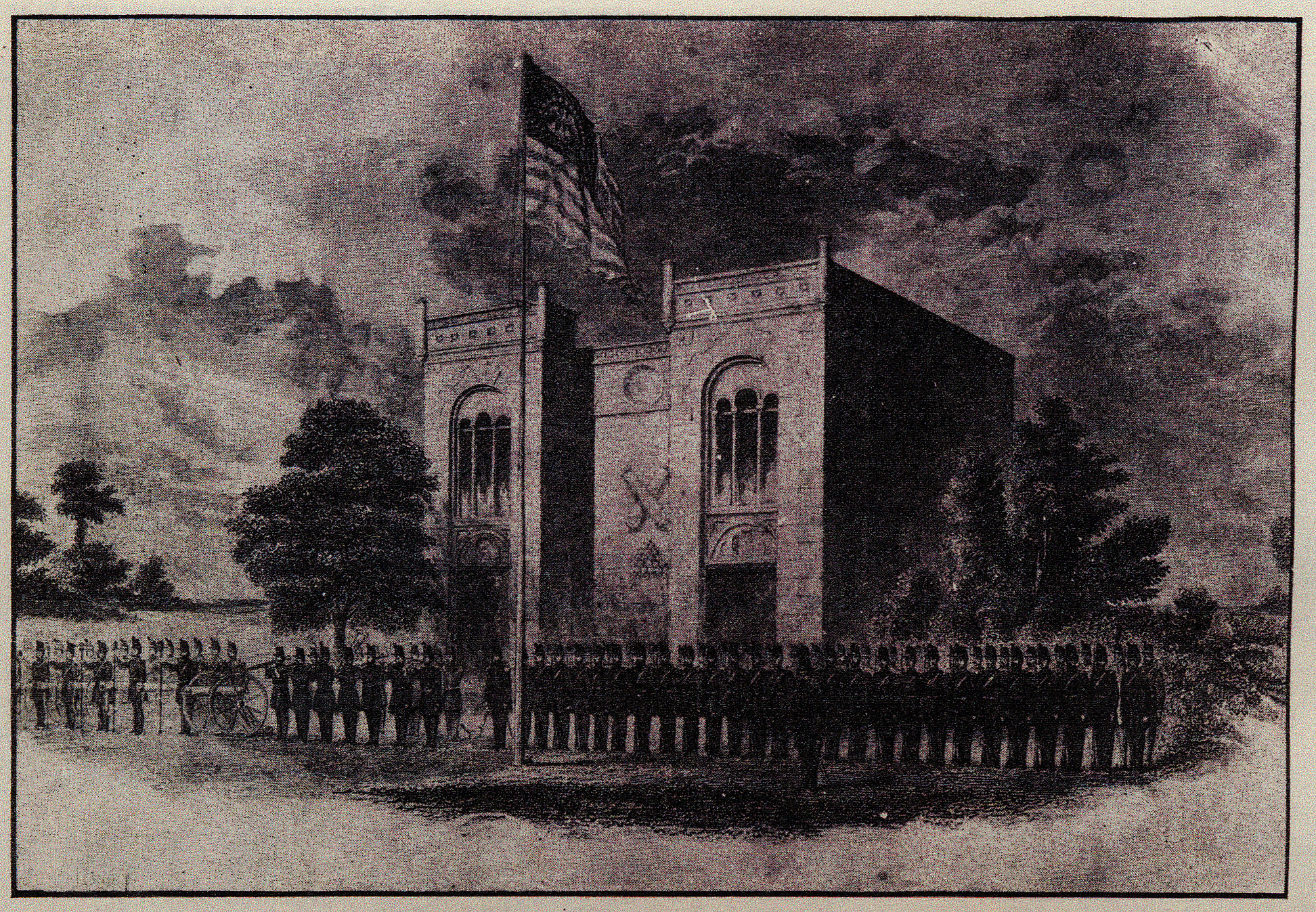
Lithograph of Battalion Washington Artillery
in front of their Girod St. Arsenal-circa
1860
In the
1840s the Washington Battalion was stationed in a former blacksmith shop on Girod Street, between St. Charles and Carondelet Streets, in New Orleans. It was
gradually adapted for military purposes and named the Washington Battalion
Arsenal. The Washington Artillery (then known as the Native American Artillery)
moved from its arsenal in the Cabildo to the Girod Street location.
After the Mexican War, the
Native American Artillery was sent home with the gratitude of the federal
government. In appreciation of their service, the State of Louisiana
appropriated $30 a month to help maintain their armory and,
in recognition of the organization’s services, the City of New
Orleans donated the Girod Street building previously used by the group as an
armory “as long as the Washington Artillery remains in possession of the city’s
cannon.” William A. Freret, New Orleans architect and member of the artillery
unit, designed plans for an upgrade of the old converted building. During its
renovation, the arsenal was a scene for many a gala. The New Orleans Delta
described a July 6, 1855 event,
“After the review in Lafayette Square, the Continental Guards presented the
Washington Artillery with a beautiful American flag, in presence of the entire
brigade, which had formed in a square. Captain Labuzan, in presenting the flag,
made a very handsome address, which was eloquently responded to by Captain
Hunting of the Washington Artillery. The ceremony of presentation finished, the
Artillery escorted the Continentals to the armory of the former company in Girod
Street, where, stacking arms, they all marched together to the residence of
General [E. L.] Tracy [former commander of the Washington Artillery now in
charge of the state militia].
Here the veteran General had prepared an excellent collation, which was
partaken of sans ceremonie, with a hearty good will by what might not
inappropriately be styled the hungry brigade—for the early hour at which the
military were ordered out, prevented most of them from breakfasting. Previous
to the collation Capt. Labuzan, on behalf of the Continentals, presented Gen.
Tracy with a service of plate as a token of their esteem. The two companies
then returned to the Washington Artillery Armory, where several huge bowls of champagne punch had been
prepared, together with "something to eat." Here, of course, all restraint was
thrown off, a pleasant half hour was passed in soldierly social intercourse,
about which we might write a column, but have neither time nor space. The
Artillery then escorted the Guards back to their own armory on Camp street, and
here they separated; the best good feeling prevailing, which it is hoped will
continue to prevail so long as these two companies maintain their present high
position and reputation.”
By 1858,
under the direction of Commander James Walton, the building was finally taking
shape as a first class facility. Its exterior military façade was
finished, complete with two medallions of George Washington’s profile,
four cannon incorporated in its pediment and crossed cannon above a stack of round cannon balls.
Its architect was the brilliant William A. Freret, son of the mayor, and member
of the unit. Here the unit grew to a full company, splendidly uniformed and
equipped at member expense. It drilled in infantry as well as artillery tactics.
The arsenal housed both rifles and cannon, but continued to act as a site for
many social events.
In
1861 work was still progressing on the facility. But more important matters were
at hand.
On May 26, 1861 the battalion, dressed in new militia uniforms of blue
and with a fine band (Gessner’s Brass Band), marched into Lafayette Square, where
it was mustered into Confederate service for the “duration of the war.” The
Washington Artillery now consisted of four companies. Two
companies were equipped as artillery and two as infantry. From there its members
marched to Christ Episcopal Church on Canal Street where its rector, Dr. Leacock,
proclaimed to them, “Our hearts will follow you, and our prayers will ascend for
your safety and return.” The
following day the battalion left their arsenal on Girod Street, the roof not yet
put on, the floors torn up. It then paraded past City Hall where the Reverend
Benjamin M. Palmer of the nearby First Presbyterian Church wished the unit “God
speed.”
After the fall of New Orleans in 1862 and while the Washington
Artillery was in the service of the Confederate government, Union forces seized the
arsenal. Union General Benjamin Butler ordered federal soldiers to
burn the building. The battalion's old records and early history, impossible to
replace, went up in flames with the structure. All that survived was the front
wall and its façade. After the war, the facade was moved to a park across from
Jackson Square which was named Washington Artillery Park, in honor of the city's
veteran artillery unit.
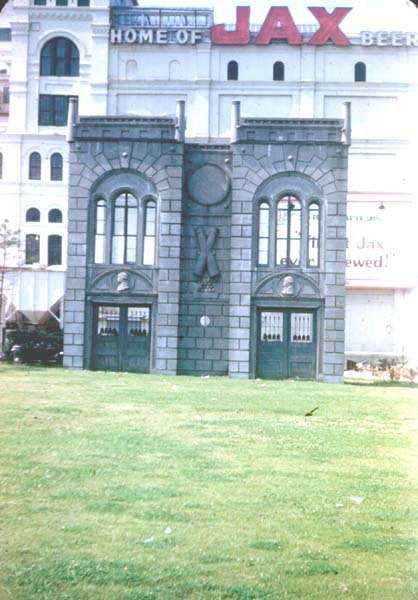
The facade of the Girod Street Arsenal as it
looked in the 1970s
at the Washington Artillery Park across from
Jackson Square.
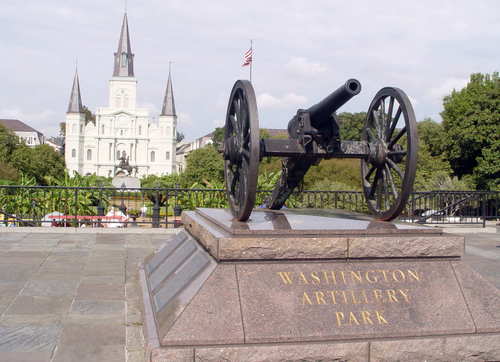
The Washington Artillery Monument has one of
the unit's original cannons.
Temporary Quarters
Washington Artillery
veterans returned to the city after the Civil War to find their arsenal in
shambles. Benjamin Butler had confiscated and destroyed the Girod
Street structure by fire during his occupation in 1862. The federal military
government in charge of the city during Reconstruction continued the insult by
selling the remnants of the burned out armory “of the rebels” in 1866 and
keeping the proceeds. Since Confederate veterans were not allowed to bear arms
or form any military organization, Washington Artillery members were forced to
meet wherever possible as the Washington Artillery Benevolent Association.
Finally on May 25, 1870, the battalion was allowed to reorganize by order of the
general of the state militia, ex-Confederate General James Longstreet. A new
arsenal was needed. The Washington
Artillery occupied temporary armories on Perdido, then Common Streets (opposite
the Medical College), until it raised sufficient funds through subscription of
its own members to purchase a new arsenal.
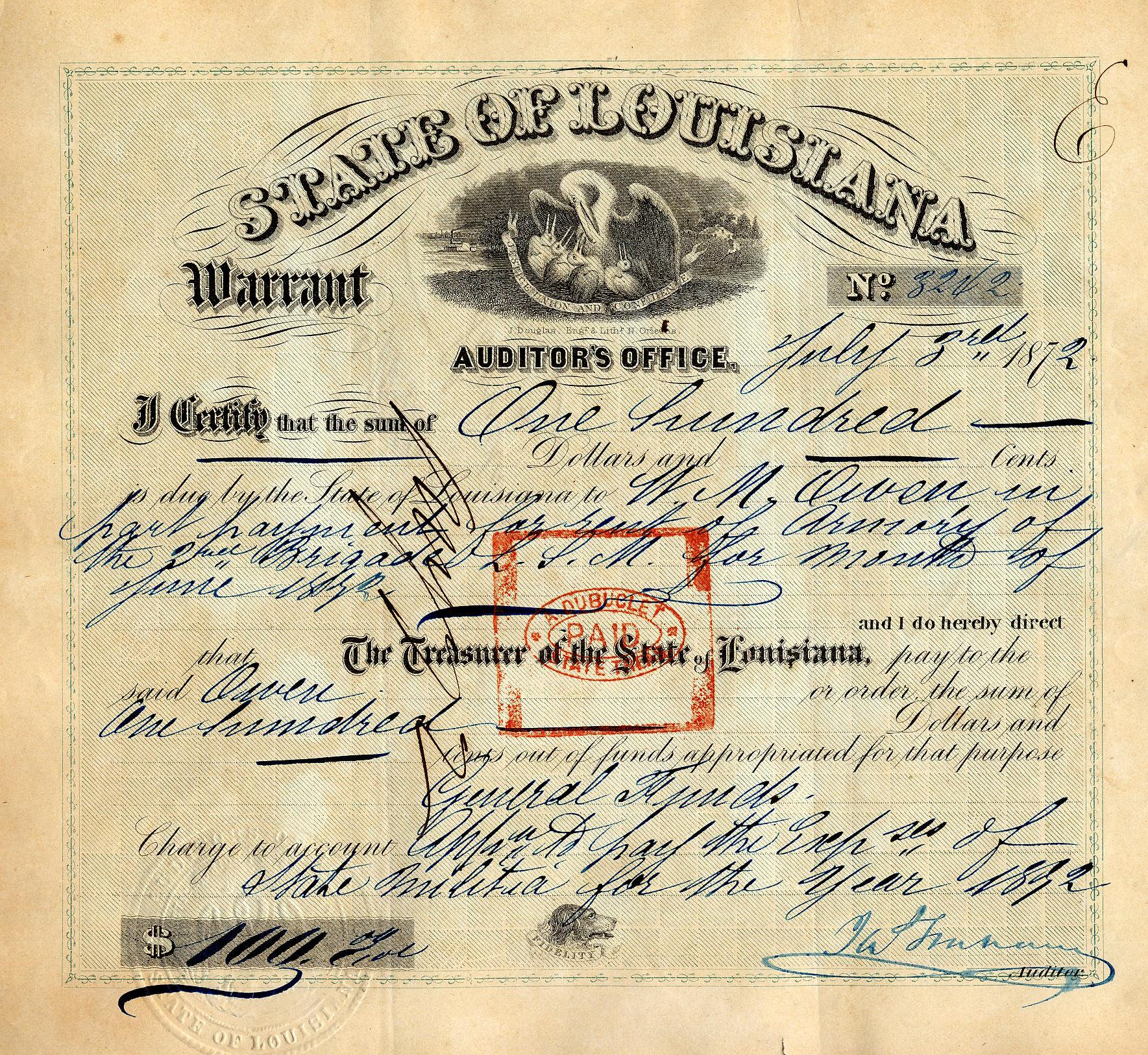
Partial payment
from the State of Louisiana to William Miller Owen dated July 3, 1872 for rent
of the armory for the Second Brigade Louisiana Militia.
St. Charles Street
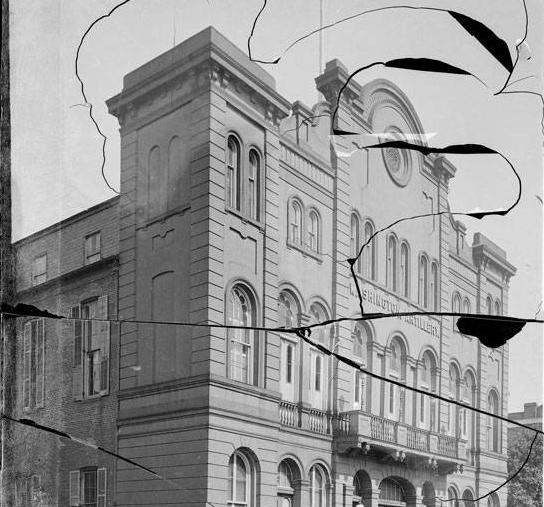
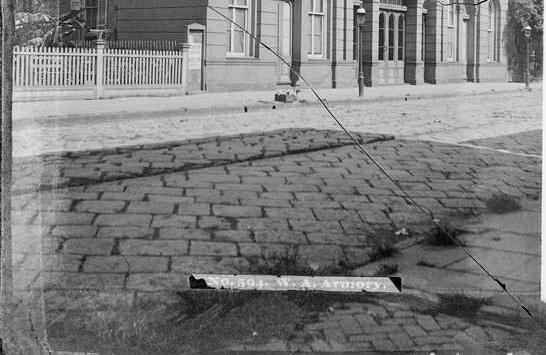
St. Charles Street Arsenal
John B. Richardson,
the Washington Artillery's then commander, found a splendid candidate for its
new arsenal in 1878 in the massive building on St. Charles Street, previously
built in 1865 and used as an exposition hall for the 1872 Grand Industrial
Exposition held in New Orleans. This three storied structure, which faced St.
Charles Street and ran all the way through to Carondelet Street (90 x 360 feet), was
called Exposition Hall. It was bought in 1878 by the Washington Artillery,
renamed Washington Artillery Hall, and used as their arsenal. Besides owning the
property, the battalion managed to totally reequip itself with its own cannon,
rifles, sabers, uniforms and ammunition. A shooting range was even constructed
within the facility, a luxury for the time.
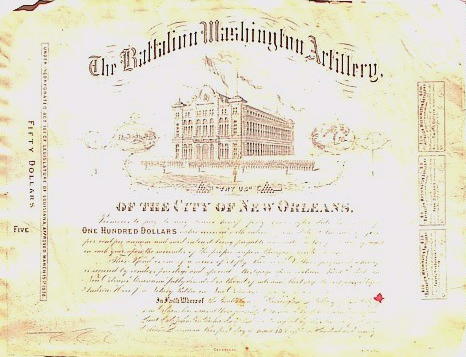
Stock issued to raise the funds needed to
buy the Louisiana Exposition Hall and convert it to the Washington Artillery
Armory, circa 1880s.
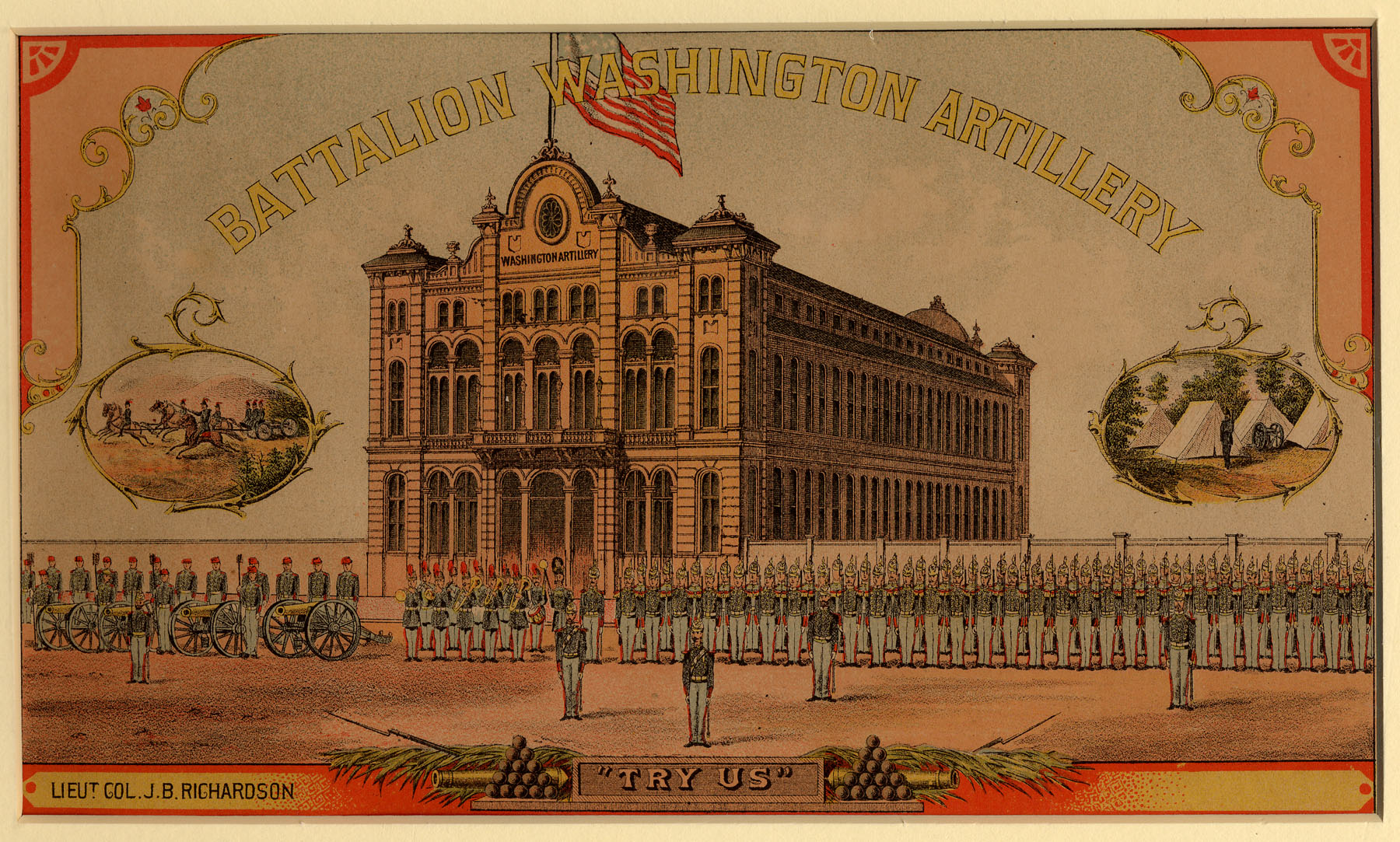
Color lithograph of the battalion in front of the
St. Charles St. Arsenal
This litho was
used in the center of the above noted stock-circa 1880s
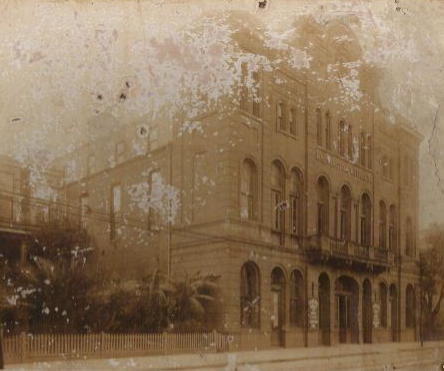
St. Charles Street Arsenal
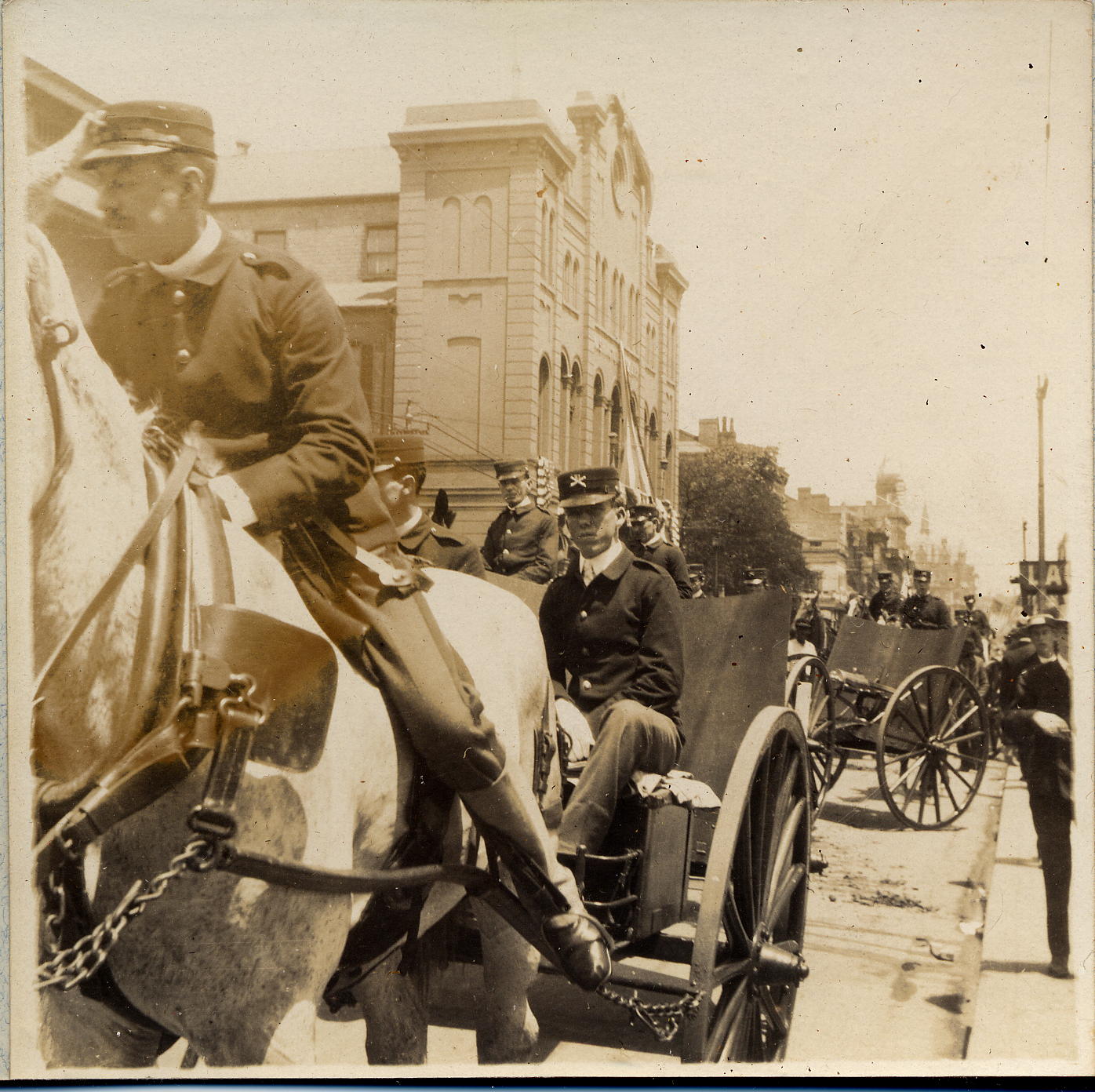
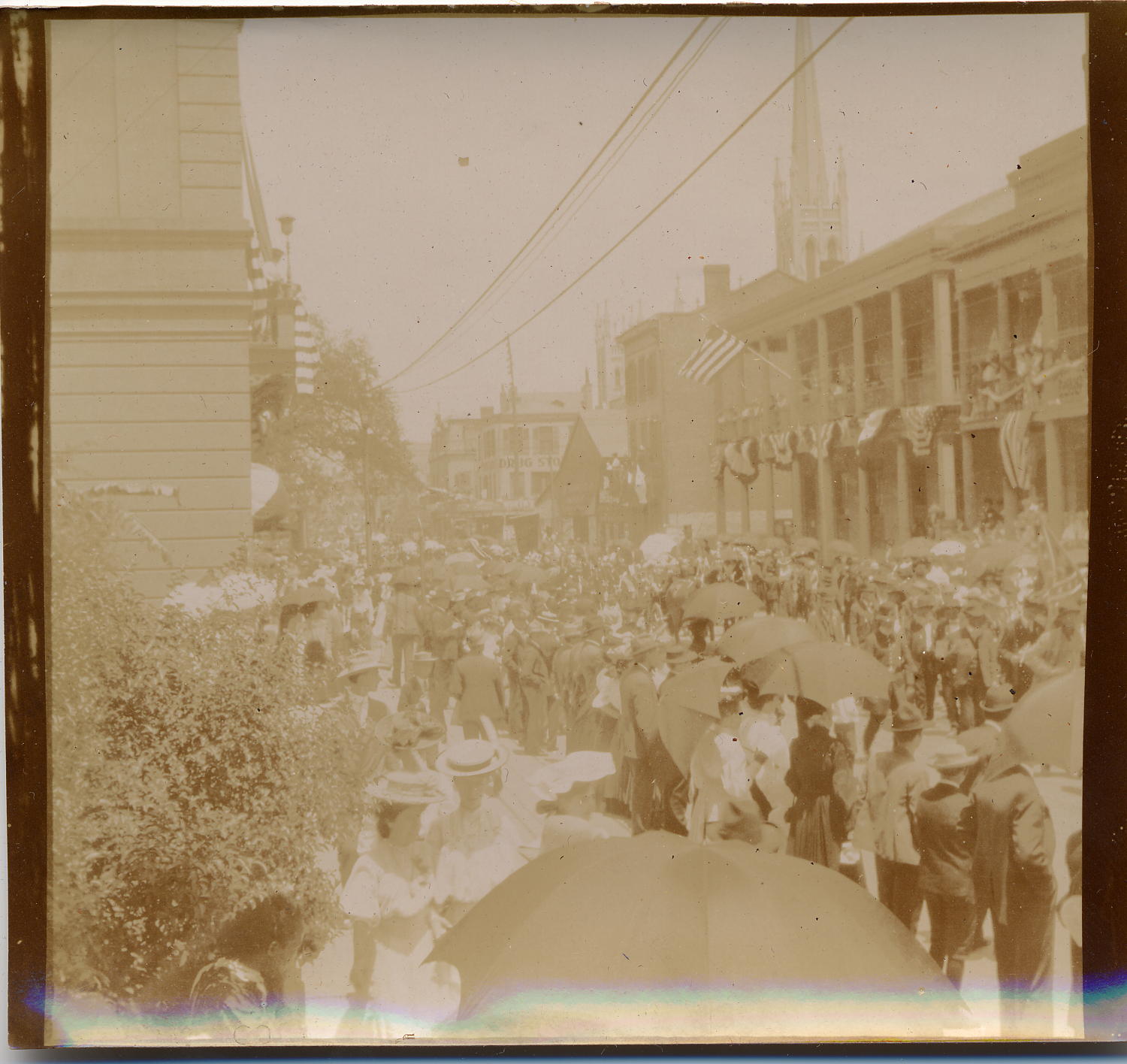
Battalion Washington Artillery parades in front of
its St. Charles Street arsenal-circa 1890s
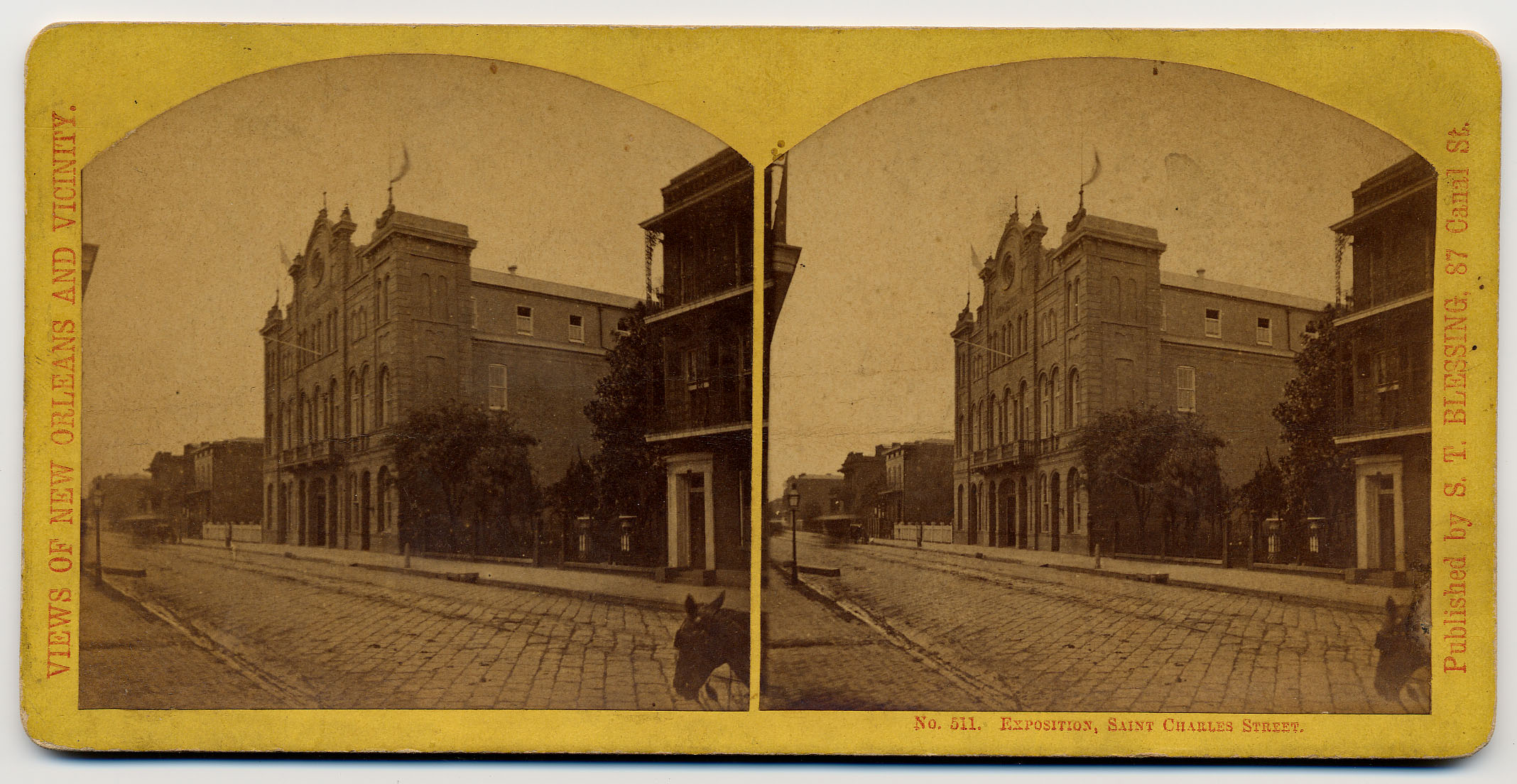
Stereoview albumen by
S.T. Blessing of
the St. Charles St. Arsenal
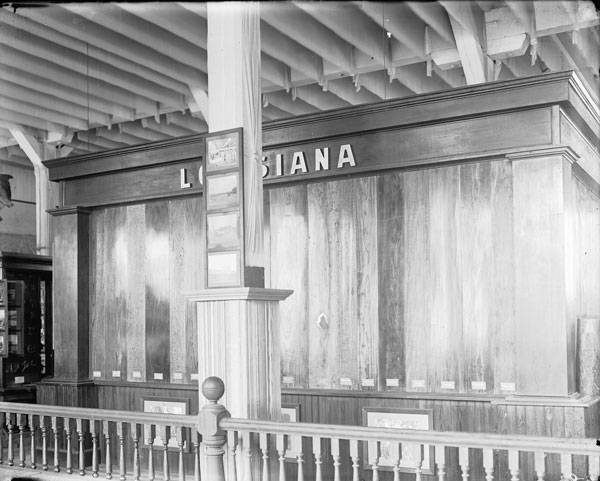
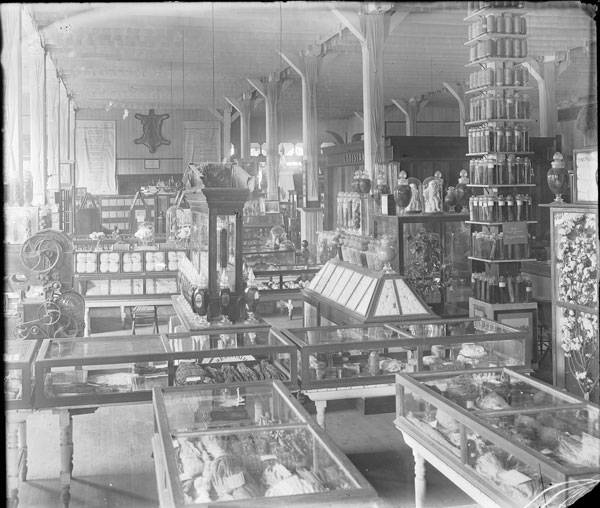
Interior of the arsenal
as seen during the Louisiana Exposition in 1903.
However, the hall’s
huge second floor ballroom was also used for many social balls, including
Carnival. (The grand hall had played host to the King of the Carnival’s first
Reception Ball in 1873.) Although the facility was not adapted for tableaux and
had a limited seating area, Washington Artillery Hall became renowned as the
Carnival Palace of Rex and his royal consort from 1879 until 1906. In fact,
several prominent ex-Confederate veterans and Washington Artillery families
reigned as kings and queens in the great hall. Philanthropists Charles T.
Howard (1877) and Frank T. Howard (1895), the latter the founder of the
Confederate Memorial Hall museum, were kings; Cora Slocomb (1881) and Bessie
Behan (1891), a daughter and a wife of WA veterans respectively, were queens.
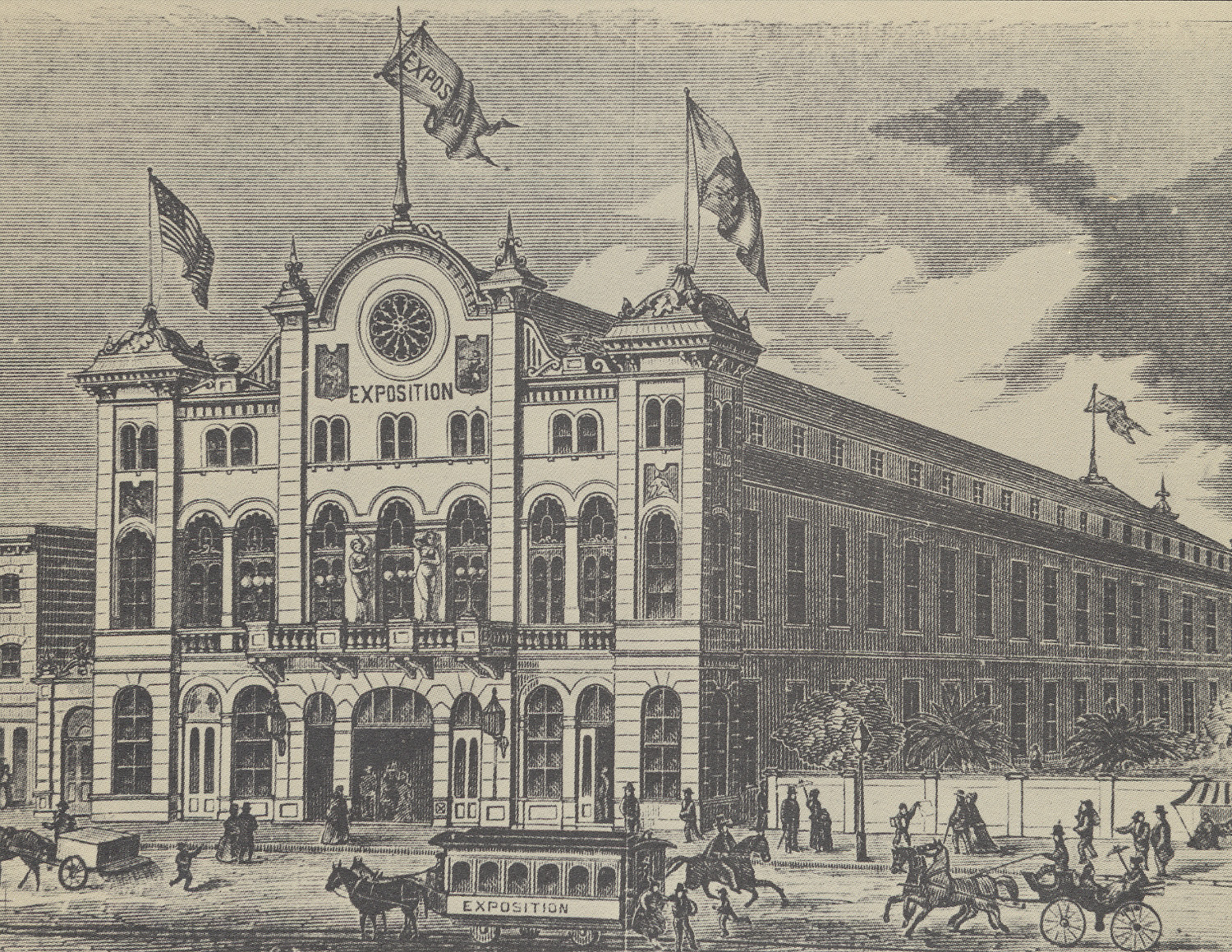
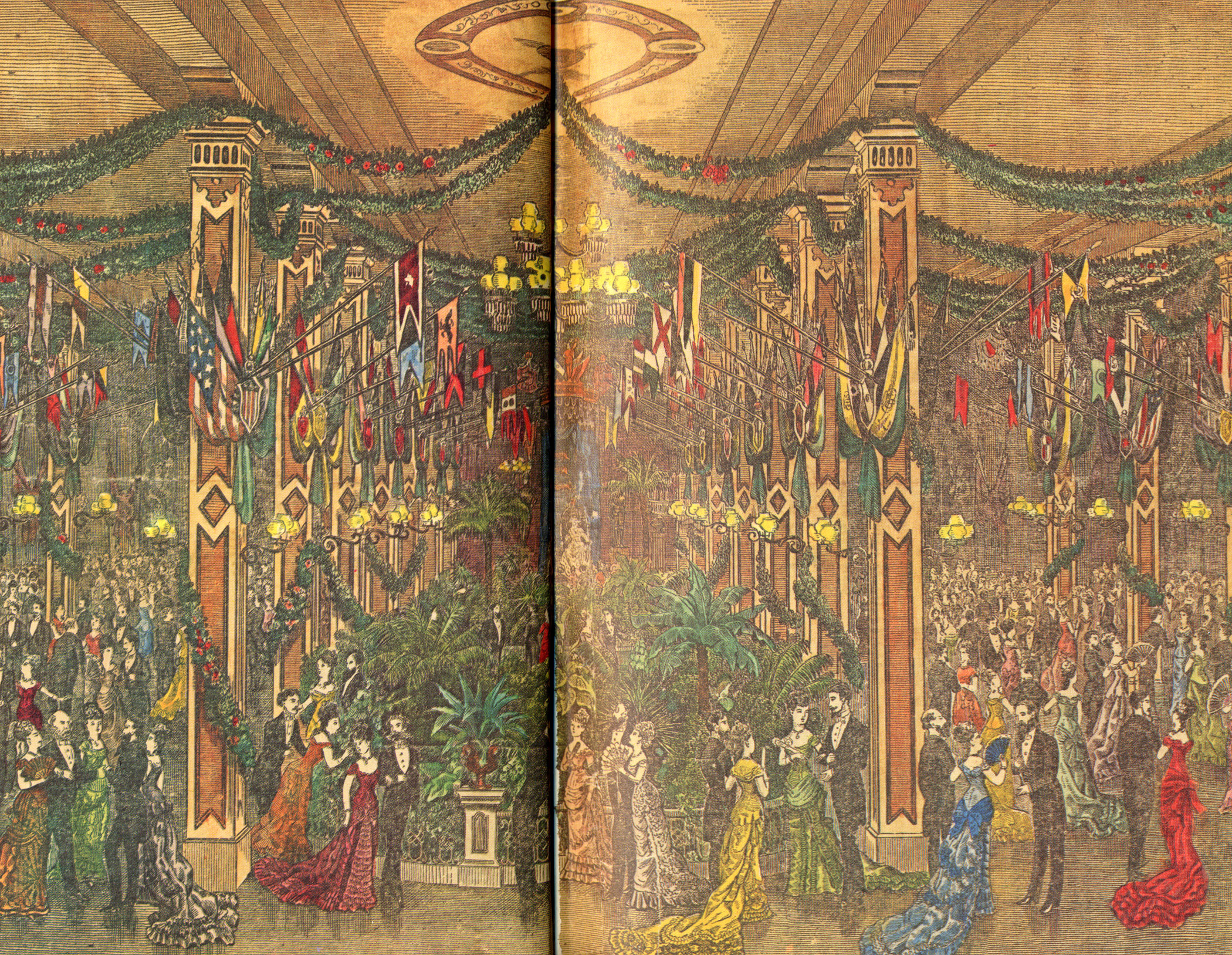
Mardi Gras balls were
held within the arsenal.
In 1882 the Washington
Artillery started holding its annual reunions there. During its 1883 reunion, the
battalion was presented with one of the three original prototype presentation battle flags of
the Confederacy. Made by Jennie Carey for P.G.T. Beauregard, the old “Creole”
himself, this flag was presented by Alfred Roman in lieu of a sick Beauregard.
The flag was held in great esteem, kept in a case and removed on only two
occasions, to cloak the coffins of Beauregard and Confederate President
Jefferson Davis. Washington Artillery Hall also served as the home for the celebrated,
monumental 10 x 12 foot oil painting by Everett B. D. Julio, representing the
last meeting of Generals Robert E. Lee and Stonewall Jackson at the Battle of Chancellorsville
[now owned by and exhibited at the Museum of the Confederacy in Richmond,
Virginia.].
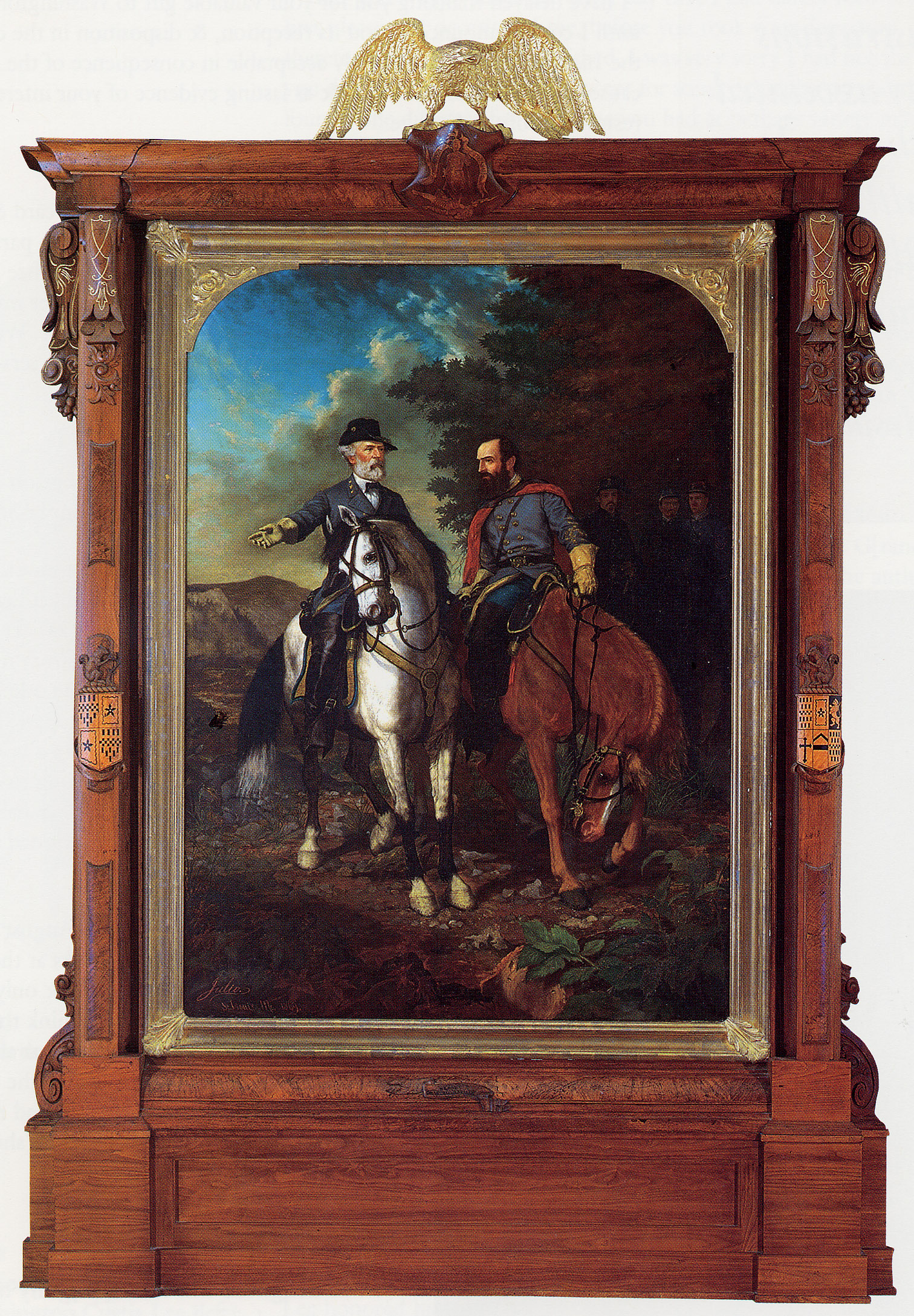
(courtesy Museum of the Confederacy)
The magnificent hall
was the scene for many more important events in the social, political, and
military annals of New Orleans, including presentations associated with the
Annual Meetings and Reunions of the United Confederate Veterans Conventions held
in New Orleans in 1892 and 1903. The structure finally fell out of favor to more
modern facilities in the 20th century. The Washington Artillery moved
its arsenal to its old practice grounds at Jackson Barracks in 1922, but
continued to use the St. Charles Street property at times.
When the military unit
returned from fighting in World War II as the 141st Field Artillery,
it decided to permanently reside at the larger Jackson Barracks location. For a brief time (1968) the unit was stationed at the site of old Camp
Nichols (the ex-Confederate veteran’s home) on Bayou St. John. Prior to the
unit’s departure from the St. Charles arsenal, many of its artifacts, mainly
post-Civil War, were transferred to the collection of the Louisiana State
Museum, where they are still currently housed. Most of the unit's Civil War era
artifacts were donated and housed at Confederate Memorial Hall, where they also
remain today. The St. Charles Street arsenal
was sold and became a car dealership but by the 1950s fell into disrepair and
was finally demolished in 1952 to make way for an office building.
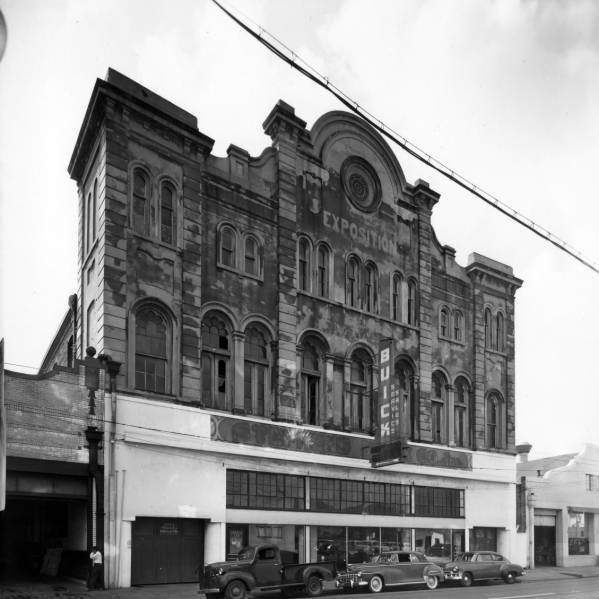
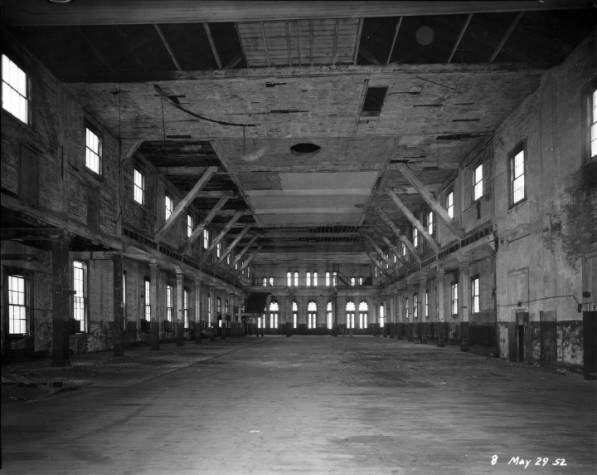
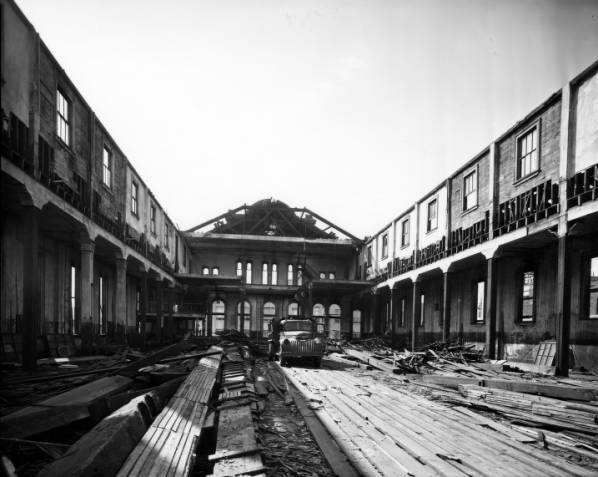
The St. Charles Street Arsenal
in the 1950s at the time of its demolition.
(1903 and 1950s B&W photos courtesy
LOUISiana Digital Library)
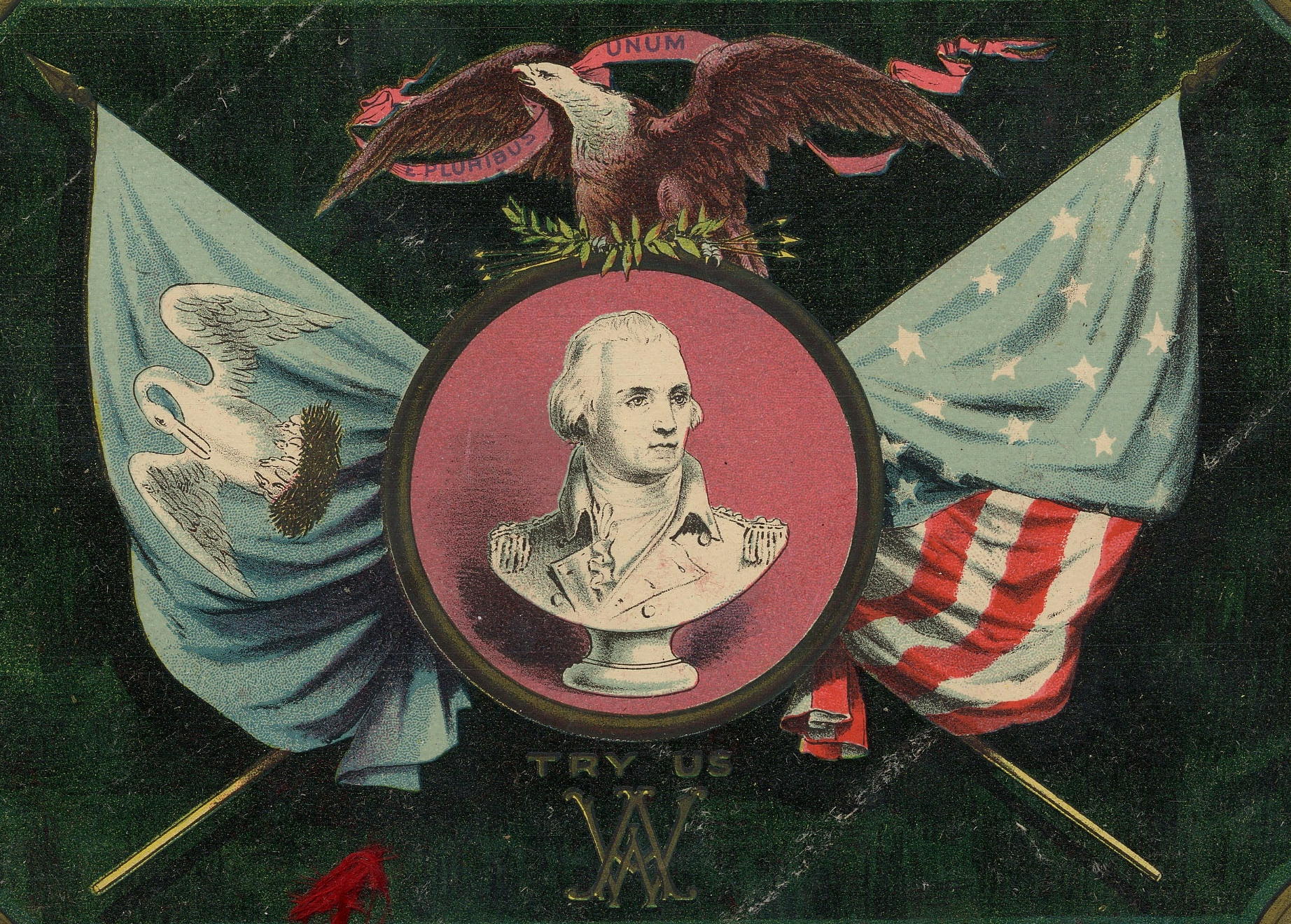
HOME